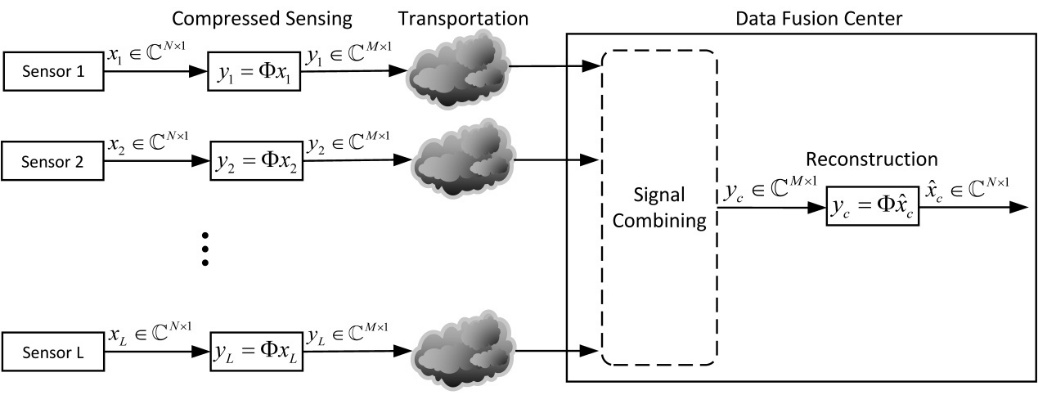Single-Measurement Vector (SMV) Compressed Sensing (CS) has gained increased interests over the past decade. The SMV CS has the potential of significant cost reduction in data acquisition and transportation.
A more general application of CS is the Multiple-Measurement Vectors (MMV), which uses the jointly sparse property of the signals derived from the multiple sensors. When the received signals are all predominantly supported on a common support set, the MMV recovery algorithms provide a better reconstruction performance by using this property. However, both the SMV and the MMV reconstruction algorithms suffer a severe performance degradation with the Signal-to-Noise Ratio (SNR) decreasing.
Therefore, WANG Leiou and his team from the Institute of Acoustics of the Chinese Academy of Sciences proposed a new MMV CS reconstruction method from the system architecture-level to deal with the signal recovery in the low SNR scenarios, called the Signal Combining - Compressed Sensing (SC-CS). The proposed method adopted the eigen-based signal combining techniques, which could effectively suppress undesired noises and enhance the signals.
The study has been published in the IEEE Transactions on Circuits and Systems II: Express Briefs.

Figure 1. The system architecture of the SC-CS (Image by IOA)
One major consideration of the eigen-based signal combining was that, for a resource-limited sensors system, these algorithms require a huge computational cost as the length of the received signal increases. Consequently, instead of first decompressing the compressed signals to perform the signal combining, the proposed method would work directly with the compressed signals to calculate the combining weights.
Researchers then applied these weights to compute a combined measurement and obtain the reconstruction signal from the combined measurement by performing decompression once.
The proposed method has two main features. First, performing the signal combining can effectively reduce the noise in the combined measurement and enhance the reconstruction performance in the low SNR scenarios. Second, calculating the combining weights from the compressed signals, whose length is only a fraction of that of the received signals, saves a great computational cost in the proposed architecture.
The simulation results showed that the proposed method outperforms the state-of-the-art counterparts in different scenarios, so it is a promising candidate to deal with the low SNR recovery.
In the future, researchers will consider further exploring new methods to accomplish the signal combining under more complicated scenarios and different noise distributions.
This work was supported by the National Natural Science Foundation of China under Grant No.61801469.
Reference:
WANG Leiou, WANG Donghui, HAO Chengpeng. A Multiple-Measurement Vectors Reconstruction Method for Low SNR Scenarios. IEEE Transactions on Circuits and Systems II:Express Briefs (12 June 2019). DOI: 10.1109/TCSII.2019.2922172.
Contact:
WANG Rongquan
Institute of Acoustics, Chinese Academy of Sciences, 100190, Beijing, China
Email: media@mail.ioa.ac.cn


